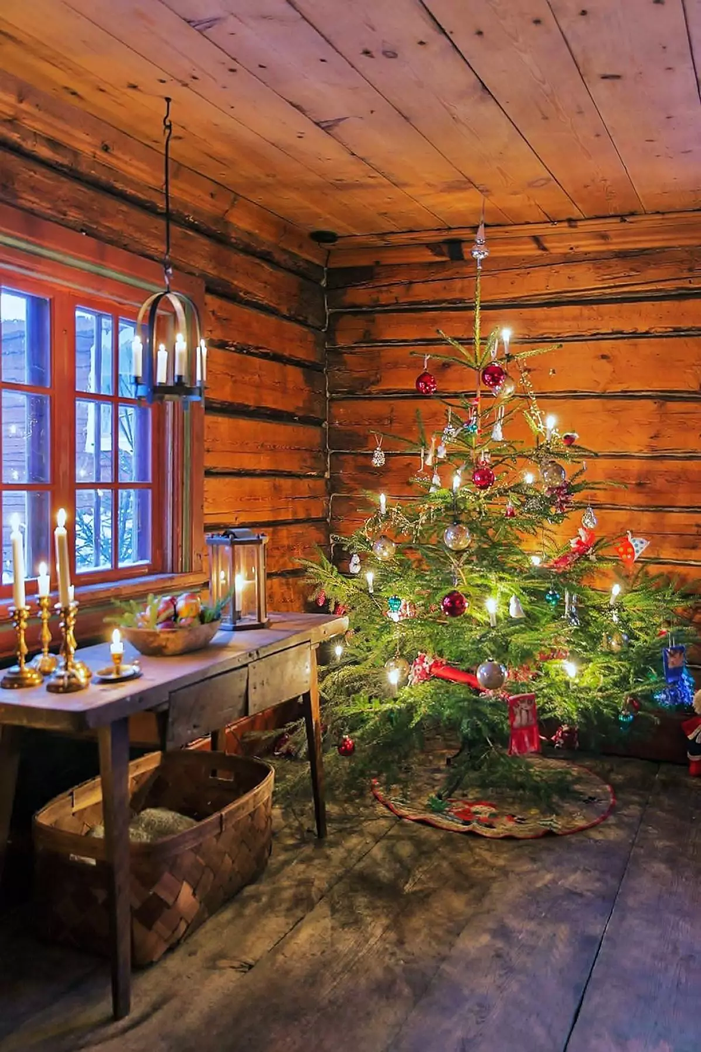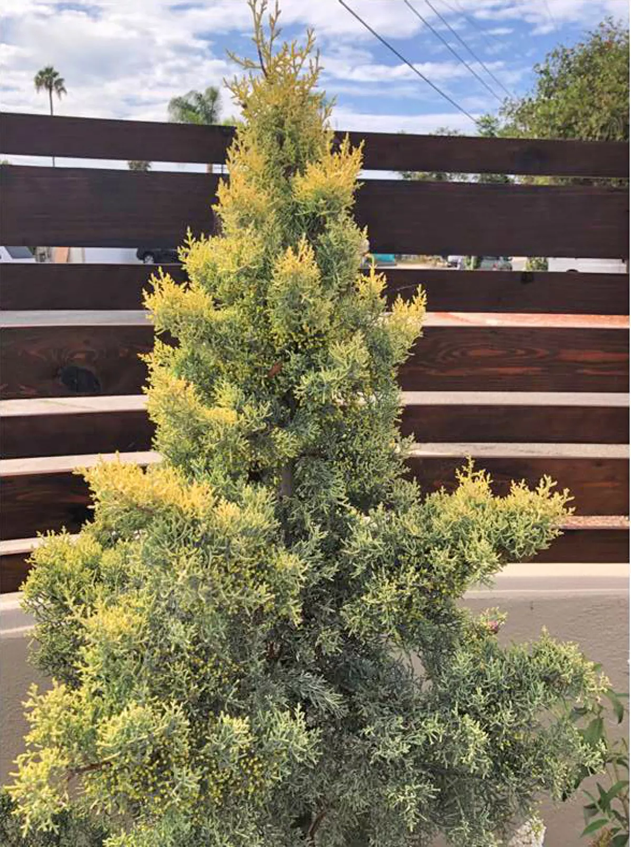Evergreens can be part of a sustainable holiday celebration

A traditional decorated nobel fir Christmas tree.(Lars Markusson via morguefile.com)
Here’s how to incorporate fragrant trees and boughs, long a symbol of life and hope, and still be a green consumer
BY SKYE RESENDES
(This article originally appeared in the December 10, 2022 edition of the San Diego Union-Tribune)
The history of decorating the home with evergreen boughs and trees dates back thousands of years to ancient times.
As the sun sank lower in its path through the sky and cold weather increased, the “evergreen” nature of spruce, firs and cedars demonstrated everlasting life, the promise of spring and the knowledge of summer’s return. As such, evergreen plants were and are symbols of hope and proof of regenerative life out of darkness.
Christmas trees likely derived from that ancient tradition of marking the shortening winter days with indoor boughs of fragrant greens. German culture is credited with beginning the tradition of decorated Christmas trees in the 1600s and then transplanting that tradition to America in the 1800s.
In the 21st century, people still crave the connection to nature that fragrant, green Christmas trees bring to a home. With concerns of deforestation, however, consumers have been given more options for marking the winter holidays and celebrating the hopeful times of Christmas in a sustainable way. Below are several choices you may consider.
The original standard is a cut tree brought into the home. Cut trees are generally an agricultural product. Farmers who produce this product have an interest in seeking out disease-resistant varieties and in protecting tree species optimal for this use. On the other hand, data suggests that pesticide use is high in the industry, and that sustainability is impacted by long-distance transport to the end user. Buying local is one way to enhance sustainability and, by getting to know your tree farmer, you can ask about pesticide use.
Not all farmers take the approach of one tree/one product. Some California farmers use stump-culture growth methods, which allows up to eight trees from one stump. I cannot argue with anyone who plants trees over buying artificial decorations for the home, because the trees themselves promote carbon capture and soil improvement. Indeed, stump-culture farming (similar to coppicing) can store “[n]early a ton of carbon per acre of trees, depending on species and number of trees planted on the land” according to the UC Cooperative Extension. If you recycle your cut trees, they will go back into the soil as compost (details provided at the end of this article).
Not all Christmas trees need to be obtained from a farmer. The National Forest Service allows individual households to obtain a tree from public lands for a small fee. To find out how, visit here. This can help cull trees and improve fire readiness.
If cut trees are not your thing, then you have the option of using a living Christmas tree. Live trees are more fragrant. But as potted plants, they must be kept cool and well-watered (moist, not drenched). You can donate the living tree after enjoying it during winter, or plant it yourself if you have the space, after the holidays.

A variation on a Christmas tree is to use a similarly structured alternative. This Golden Arizona cypress requires no additional water after being established, yet delivers festive color and can be strung with outdoor lights for the season.(Skye Resendes)
Or, plant a Christmas tree outdoors. If you intend to plant the tree on your property, choose a good variety for San Diego, including native conifers, cypress, junipers and firs. A visit to California Native Plant Society at cnps.org will help you pick the tree you like, at the right size and for your microclimate conditions. I recently planted a Golden Arizona cypress (Cupressus arizonica ‘Sulphurea’) that needs no additional water after its first few years of transplanting. I love the way the leaves vary from lemon yellow at the tips to a bright blue throughout the plant. It is like having a decorated tree without the decorations! Beware, though, because some varieties of evergreen trees can grow big if not regularly trimmed.
A recent development in the industry is to rent a living tree. Local operations deliver living Christmas trees to your home — you can select from several varieties. You will need to water the tree daily, keep it from heat sources and only use sustainable decorations. Upon its removal 3 to 4 weeks later, it is returned to the ground, where it continues to provide habitat for wildlife and clean air benefits for the planet.
If an entire tree is too much for you, you can still enjoy the fragrance and beauty of indoor greenery by using tree cuttings. In 16th century Germany, where candlelit Christmas trees are believed to have originated, families would build wooden forms upon which they placed evergreen boughs. Cuttings can also be used to fashion wreaths upon wire forms (I have even used old coat hangers) with ribbon from last year’s present wrapping.
If you opt for a cut tree or have boughs to recycle, city of San Diego residents can drop off trees in one of many recycling locations, to help create mulch for future plants: sandiego.gov/environmental-services/recycling/events/christmas. County of San Diego residents should check https://wastefreesd.org for recycling options and more.
Resendes is a UCCE Master Gardener, Class of 2020. She gardens in her coastal home, Zone 10a, growing fruits, vegetables, ornamentals, and safe-from-cats outdoor Christmas trees.

